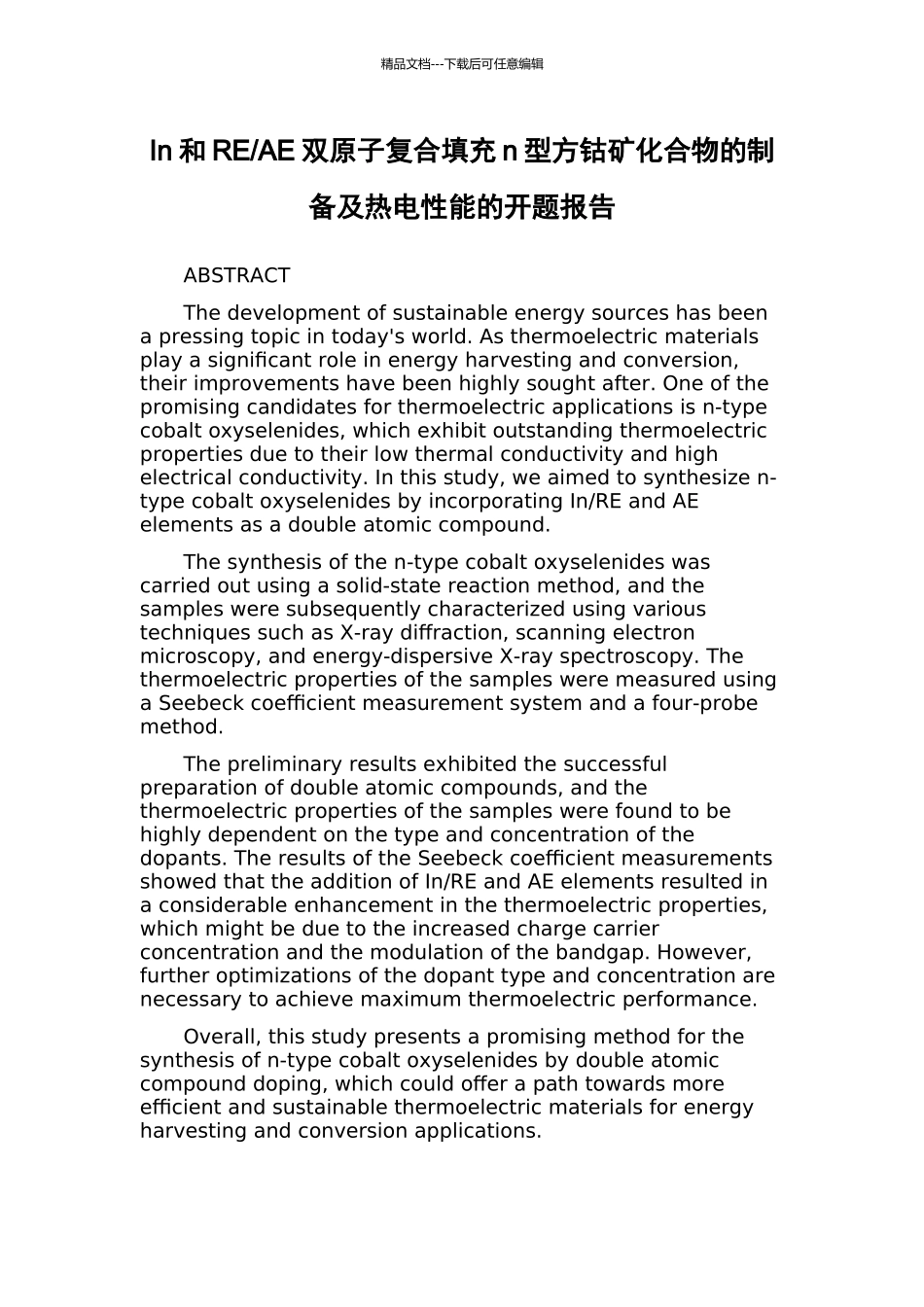精品文档---下载后可任意编辑In 和 RE/AE 双原子复合填充 n 型方钴矿化合物的制备及热电性能的开题报告ABSTRACTThe development of sustainable energy sources has been a pressing topic in today's world. As thermoelectric materials play a significant role in energy harvesting and conversion, their improvements have been highly sought after. One of the promising candidates for thermoelectric applications is n-type cobalt oxyselenides, which exhibit outstanding thermoelectric properties due to their low thermal conductivity and high electrical conductivity. In this study, we aimed to synthesize n-type cobalt oxyselenides by incorporating In/RE and AE elements as a double atomic compound.The synthesis of the n-type cobalt oxyselenides was carried out using a solid-state reaction method, and the samples were subsequently characterized using various techniques such as X-ray diffraction, scanning electron microscopy, and energy-dispersive X-ray spectroscopy. The thermoelectric properties of the samples were measured using a Seebeck coefficient measurement system and a four-probe method.The preliminary results exhibited the successful preparation of double atomic compounds, and the thermoelectric properties of the samples were found to be highly dependent on the type and concentration of the dopants. The results of the Seebeck coefficient measurements showed that the addition of In/RE and AE elements resulted in a considerable enhancement in the thermoelectric properties, which might be due to the increased charge carrier concentration and the modulation of the bandgap. However, further optimizations of the dopant type and concentration are necessary to achieve maximum thermoelectric performance.Overall, this study presents a promising method for the synthesis of n-type cobalt oxyselenides by double atomic compound doping, which could offer a path towards more efficient and sustainable thermoelectric materials for energy harvesting and conversion applications. 精品文档---下载后可任意编辑Keywords: cobalt oxyselenides, thermoelectric materials, double atomic compound, doping, Seebeck coefficient.

